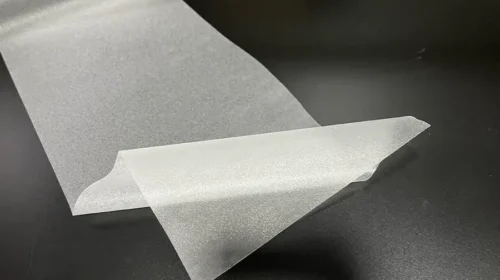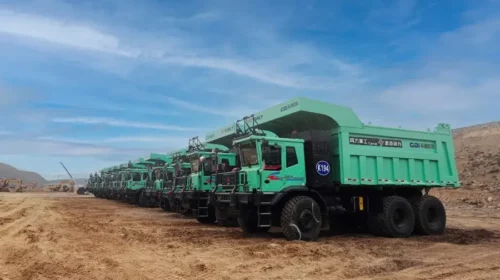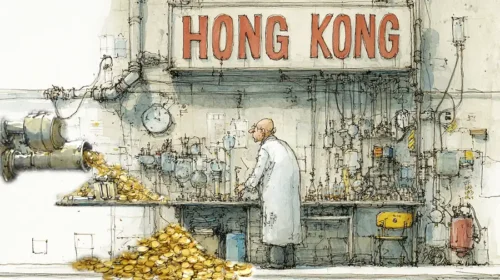CBAK Talks Up Acquisition of Troubled Supplier, But Investors Unimpressed

The electric vehicle battery maker’s shares have continued to slide even as it touts the benefits of a recently acquired supplier that will sharply boost its revenue
Key takeaways:
• CBAK says a troubled battery materials supplier it acquired late last year generated about four times its own revenue in the first nine months of 2021
• Filings show financials for the acquired company remain shaky, with its operations producing large cash deficits
By Warren Yang
One can hype up a head-scratching decision only so much. Electric vehicle battery maker CBAK Energy Technology Inc. (CBAT.US) is doing just that, trying to put a positive spin on a recent acquisition that seems more troublesome than helpful for the company. Despite its efforts, investors remain unimpressed.
In a March 17 announcement, the lithium-ion battery maker touted the great performance of Zhejiang Meidu Hitrans Lithium Battery Technology Co., a troubled supplier of battery materials that CBAK acquired in the third quarter of last year.
CBAK said Hitrans’ revenue for the first nine months of last year totaled $97.9 million, about four times what CBAK itself brought in during the same period. Hitrans earned $11 million in gross profit and $4.2 million in operating profit during the period, while CBAK made an operating loss. CBAK said it will start including Hitrans’ financials in its own reports this year, expecting the new unit’s “excellent results” will significantly boost the U.S.-listed company’s profit.
But despite the fluffy language, CBAK shares dropped 6% in the following two days after the announcement, extending their decline from a peak last June. Perhaps investors were feeling less upbeat after reading the fine print of a filing with the Securities and Exchange Commission (SEC) submitted the same day as the press release.
For starters, this acquisition, which was first announced it in a three-paragraph statement back in July and cost CBAK about 158.74 million yuan ($24.6 million), is anything but ordinary. According to the SEC filing, before the acquisition by CBAK, Hitrans was 60% owned by a company called Zhejiang Meidu Graphene Technology. Some Hitrans executives, including its CEO, held 25% of the company, and a business named New Era Group Zhejiang New Energy Materials owned the rest.
After Hitrans failed to pay New Era on time for some assets, including land use rights, plants and equipment, New Era had a court freeze the 60% stake held by Meidu Graphene, which was a guarantor for Hitrans. The 25% stake held by Hitrans executives was also frozen because it was being used as collateral for defaulted debt they owed to Zhejiang Meidu Pawn Co. Ltd., which appears to be an affiliate of Meidu Graphene.
An individual named Ye Junnan became an intermediary to take over most of the frozen shares while the messy situation was sorted out. CBAK first bought a 21.56% stake in Hitrans for 40.74 million yuan from Ye, who used the proceeds to repay the debt owed by Hitrans executives to Meidu Pawn.
CBAK then took a series of steps to unfreeze the 60% stake held by Meidu Graphene, including extending a loan to Hitrans that ultimately paved the way for Ye to acquire the shares. Once those shares were unfrozen, CBAK then acquired them from Ye for 118 million yuan. After all that, Hitrans then owed Ye 180 million yuan, which it agreed to repay by the end of last year.
It’s not clear how Hitrans, under its new CBAK ownership, planned to meet the obligation to Ye without enough cash of its own on hand. It’s possible CBAK may have provided some financial assistance, which the company may discuss when it releases its 2021 results this Thursday.
Bailout
Simply put, CBAK’s elaborate steps amounted to a bailout of Hitrans, whose financials deteriorated substantially in 2020. According to CBAK’s March 17 SEC filing, Hitrans’ revenue dropped about 27% in 2020 and its net cash flow from operations turned negative. CBAK, along with a company whose board members include a former CEO of CBAK, was a major customer of Hitrans that year, but business between the two appears to have dwindled since then.
Hitrans’ current liabilities exceeded its current assets in 2020, which means it had negative working capital and its ability to pay short-term debt was in jeopardy.
Hitrans’ business did recover last year, with revenue for January-September already surpassing that for all of 2020. Yet it still seems to be on shaky footing. Despite the revenue growth, the company’s negative cash flow actually increased during the nine months from the same period of 2020, while its cash spending for investment more than quadrupled.
Now the onus is on CBAK to help improve Hitrans’ negative cash flow. But that could be problematic since CBAK’s own finances aren’t really in good shape either. CBAK also reported negative cash flow from operations in the first nine months of last year, and the money it spent to take over Hitrans far exceeded its cash at the end of 2020.
To fund the Hitrans transaction, CBAK issued new shares – a lot of them. Through September last year, it raised about $65.5 million by selling new shares, representing a major dilution for existing shareholders of a company whose market value is now just about $100 million. The company was actually worth a lot more before the big dilution, which put CBAK’s shares on a downward track that saw them lose two-thirds of their value from before the transaction was first announced.
The market for electric vehicle batteries in China is booming as Beijing throws its weight behind environmentally friendly cars. That drive has been a boon for Contemporary Amperex Technology Co. Ltd. (300750.SZ), or CATL, which has become not only China’s but the world’s top top battery maker, commanding a sky-high price-to-earnings (P/E) ratio of 110 and a similarly hefty price-to-sale (P/S) ratio of more than 20.
At the same time, though, the battery market in China is fiercely competitive, full of small manufacturers like CBAK. Even though the market is huge and further expanding, CBAK’s clientele appears small, with a handful of customers accounting for more than half of its revenue in the first nine months of last year. This means that the loss of just one key customer would leave a big hole in its revenue.
So, it’s not hard to see why CBAK has fallen out of flavor with investors. Its shares trade at a P/S ratio of less than 3 based on its revenue for 2020, a fraction of the multiple for CATL. Part of the gap may owe to CBAK’s listing in the U.S., which has become an increasingly hostile market for Chinese stocks. CATL is listed in Shenzhen. There is no trailing P/E ratio for CBAK stock because the company lost money in 2020 and has yet to report final 2021 earnings.
Achieving better vertical integration by purchasing a supplier like Hitrans can theoretically bring some benefits for CBAK, such as steady supply of materials. But at the same time, as anyone can imagine, adding together two financially struggling companies really just creates an even larger struggling company.
To subscribe to Bamboo Works free weekly newsletter, click here






